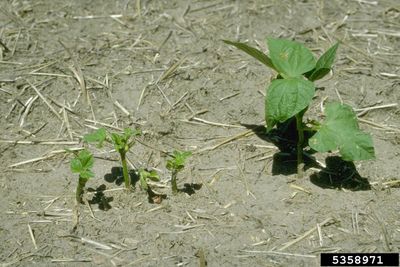What Causes Baldhead of Beans?
Baldhead bean “disease,” also known as “snake head,” is the result of physical damage or cracking that happens when the seeds are handled while harvesting, cleaning, or planting. Bean seeds with low moisture content are more susceptible to mechanical injury. Dry soil is also a contributing factor, and damage occurs when seeds attempt to germinate and push through cracked, dry soil.
Symptoms of Baldhead Bean Disease
Although seeds may germinate, seedlings with baldhead bean disease typically show damage at the point of growth. The severely stunted, malformed seedlings may manage to form small shoots, but they are usually unable to develop seeds or pods.
Preventing Baldhead of Beans
Once baldhead of bean occurs, there is no treating baldhead bean disease, and the tiny, misshapen seedlings will eventually die. Careful handling of bean seeds during harvest, planting, cleaning, or threshing will go far to prevent the problem, however. Use high quality been seeds and don’t allow the seeds to get too dry. Ensure your garden soil is moist and loose to prevent damage to seeds during the germination process. The good news is that although the problem is common, baldhead bean disease usually doesn’t affect entire crops. This means you should still be able to grow and harvest the remaining bean plants in your garden without issue. Don’t let the thought of baldhead of beans discourage you from growing bean plants. As long as you take suitable precautions, this is one of the easiest vegetables to grow.
